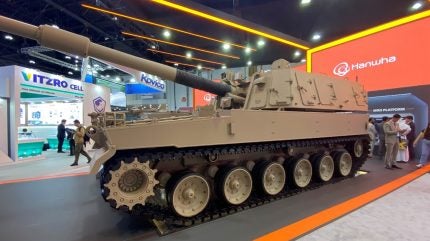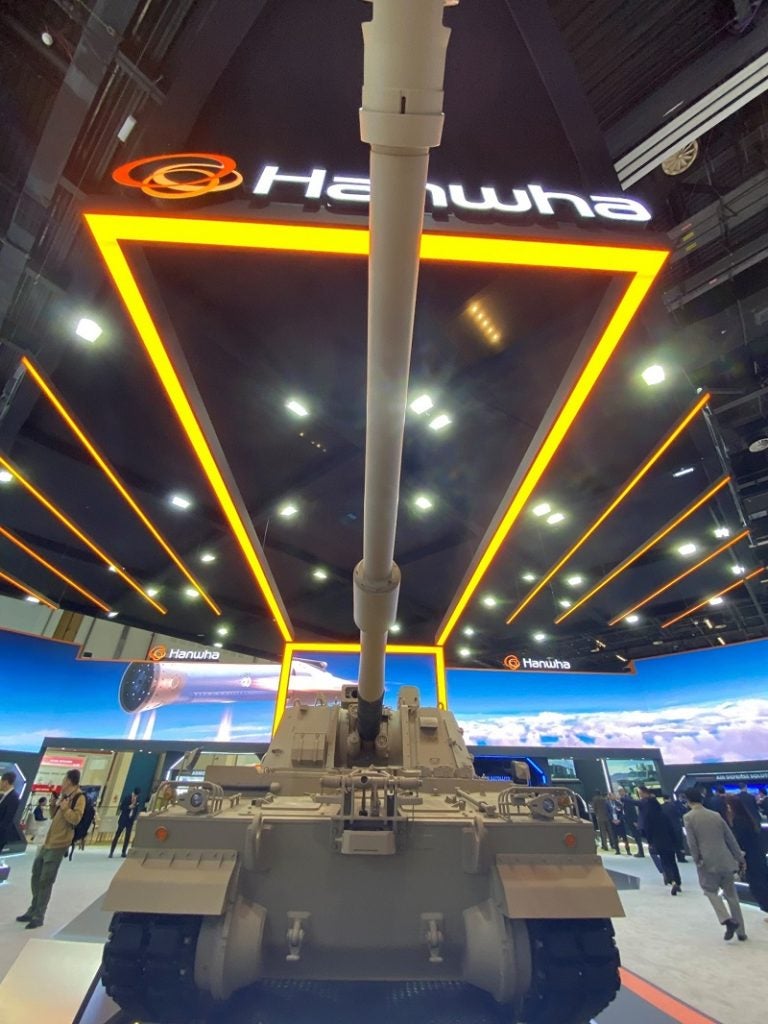
Hanwha Aerospace is looking to expand its presence in the Middle East market with its 155mm K9 artillery system, which was exhibited at the International Defence Exhibition and Conference (IDEX 2025) in Abu Dhabi, United Arab Emirates (UAE) on 19 February 2025.
The K9 first emerged in 1996 and subsequently followed up with the A1 variant in 2018. Hanhwa went on to propose the K9A2, which enhanced aspects of the fire control system, while the latest A3 variant is in research and development comprising a larger gun and increased autonomy.
The platform operates using ‘shoot and scoot’ tactics, balancing surface-to-surface firepower with survivability through mobility.
While nothing has been finalised, a spokesperson confirmed to Army Technology that talks with certain Gulf countries regarding the potential procurement of the K9 and other Hanwha systems are ongoing.
Tapping into the Middle East
Hanwha have set its sights on the UAE, whose armed forces plan to upgrade their self-propelled artillery systems soon: the spokesperson specified that the manufacturer will likely submit a proposal some time in 2025.
The spokesperson noted that the UAE was attracted to the the K9’s new home-built, 1,000 horsepower diesel engine. It has lately completed acceptance trials, proving that the engine powered the tracked howitzer across 10,000km of desert terrain in Egypt and the UAE.
Also, the indigenous engine is not subject to troublesome export licences. STX, a Korean engine manufacturer, needed the licences to build the German-made MTU engine for K9.
Elsewhere in the region, Hanwha has also approached Saudi Arabia. Although, this prospective deal would include a wider range of platforms and systems besides the K9.
Some of the oldest artillery systems that entered service with the Saudi Arabian Army came in 1979 according to GlobalData intelligence. Notably, Hanwha already has a footprint in the Kingdom as its government is already in the middle of acquiring the K239 Chunmoo multiple rocket launch system.
“They want many things,” the spokesperson hinted, it would be “a massive deal if it comes about.”

British rejection
At present, Australia, Egypt, Estonia, Finland, India, Norway, Poland, Romania, and Türkiye have each selected the platform.
The UK had also considered the K9 for its future Mobile Fires Platform. At least until the former Conservative government rejected the bid in favour of the German RCH-155 system in April last year.
At the time, the supplier admitted it was “bruised” by the decision. Strangely, the UK rejected the K9A2 variant out of hand without any competitive process whatsoever.
With no demonstrable comparison, the decision to select RCH-155 was out of step with the spirit of the government’s own Integrated Procurement Programme, established only two months prior, which sets checks and balances in a holistic government procurement approach from the outset of an acquisition.
This has not stopped Hanwha from seeking future opportunities to bring the UK back into bed. Hanwha will “offer a better price for its [other] solutions,” assured the spokesperson.



